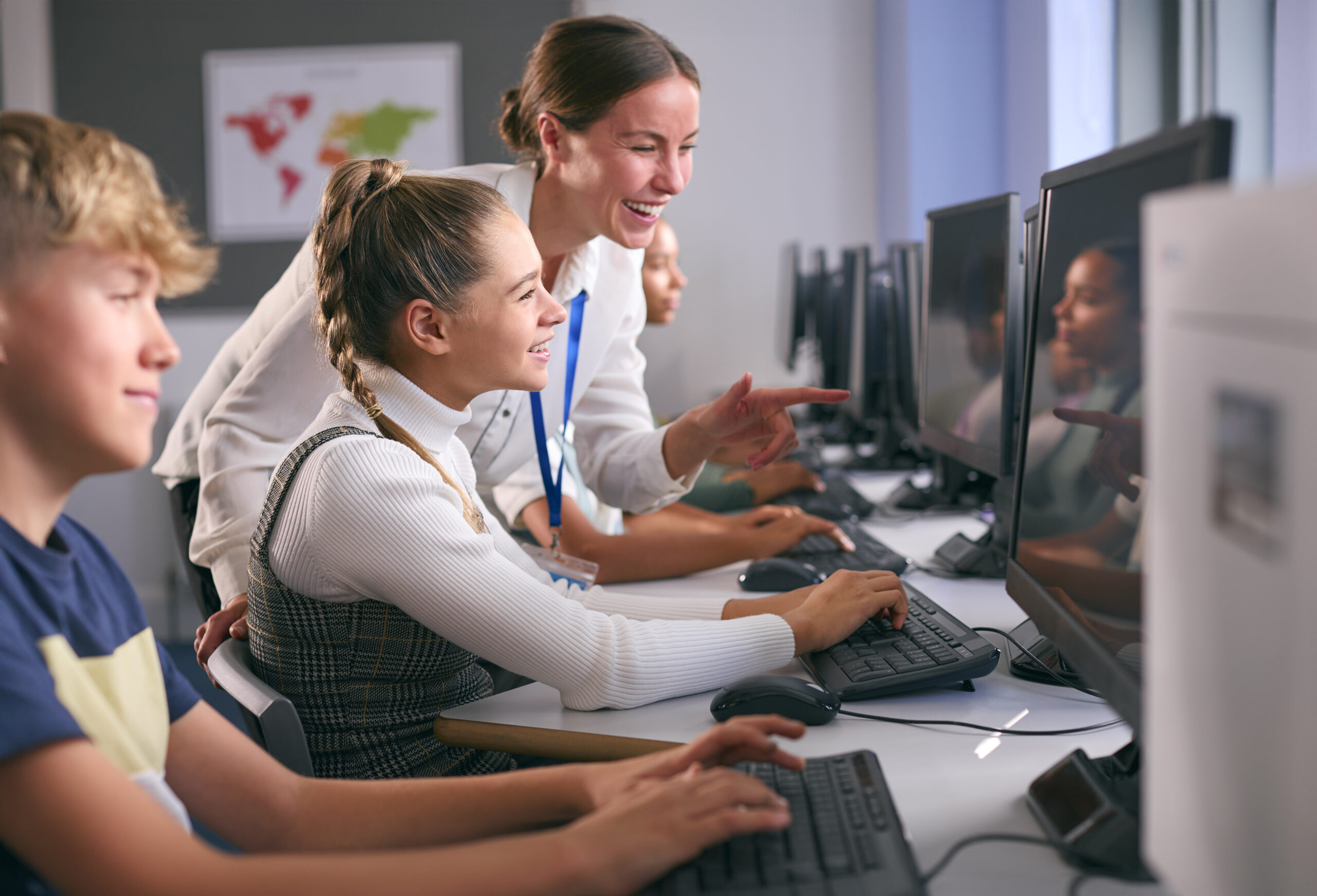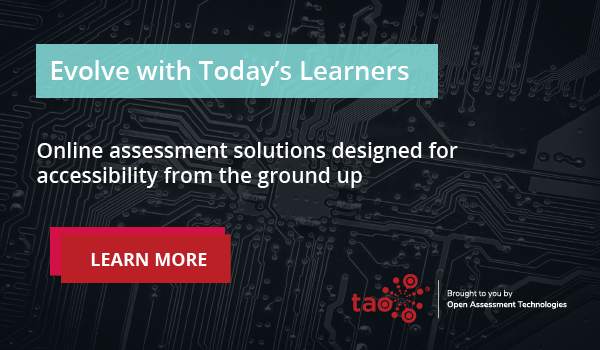Picture a typical educator in a room full of young people with unique strengths, challenges, backgrounds, and learning needs. Regardless of the teacher’s expertise, achieving the best outcomes for each student in this scenario can be tough—especially as student needs will shift over time as they learn (or not!). This is where adaptive learning can make all the difference.
Adaptive learning uses specific feedback, tailored teaching, continuous adjustment, and flexible learning sequences to achieve high-level personalization. And with the advent of technologies like AI and digital assessment, delivering adaptive learning is becoming easier. In this article, we’ll give you an overview of how it works, its benefits for student learning outcomes, and some concrete ways to introduce this strategy in your classroom.
Key Takeaways
- Adaptive learning uses regular assessment to understand the gaps in student understanding and addresses them with flexible, personalized instruction.
- Digital assessment platforms like TAO can support multimodal learning and adaptive assessment to save time and boost engagement.
- Teachers can start small with formative assessment to get a snapshot of their students’ performance, then bring in regular digital testing for a full understanding of what they need.
What Is Adaptive Learning?
Most traditional classrooms use one “scheme of learning” for the entire class. This usually means the same texts, questions, and assignments for everyone. But does this “one-size-fits-all” style really meet each student where they are?
Adaptive learning is a method of personalizing teaching with a continuous process of assessment, followed by modifying instruction to address each student’s level and requirements. This adjustment is key to the strategy so that instruction is truly flexible rather than fixed.
Before an adaptive scheme of learning begins, the teacher uses prior assessment to understand the students’ base levels of understanding and identifies any particular learning needs. They then break down the course material into digestible chunks and prepare teaching resources.
During the lesson sequence, the teacher frequently gauges student understanding using formative assessment techniques and makes “in-the-moment” adaptations to tasks to make sure gaps in understanding are addressed.
Following each lesson, the teacher reflects on the point each student has reached to inform future planning. Ideally, students move through a personalized learning sequence. You may assign individual tasks or offer a choice (of resource, next topic, or learning method). In this way, all students get closer to the learning objectives but may each take a different path.
Modern technologies and approaches like digital assessment tools, AI, and multimodal learning can make adaptive learning even easier, more engaging, and more effective.
Benefits of Adaptive Learning
Adaptive learning brings a host of benefits to both teacher and student—and, by extension, their institutions.
Benefits to the student
Adaptive learning can help students make more progress by swiftly addressing misconceptions in real time before they become embedded. Concepts are reinforced over time until the student reaches mastery. It’s little wonder, then, that evidence from the Programme for International School Assessment (PISA) shows that adaptive teaching can lead to better learning outcomes.
There are also benefits in terms of student engagement. Students avoid boredom by moving quickly through things they already understand. The material feels personalized and targeted, and therefore potentially more relevant. If you introduce an element of choice in how students progress within the lesson sequence, this can also boost their sense of agency.
Some students may gain an academic benefit from being able to move through things more quickly or more slowly, depending on need. Rather than feeling overwhelmed, for example, which can turn them off a subject, students may benefit from taking their time on a tricky topic.
Students often enjoy using digital technologies, and the option to integrate multimodal learning can also make it more fun than just listening to the teacher at the front of the room. For students with learning needs like dyslexia or English as an Additional Language (EAL), the content can also be made much more accessible with pictures and video/audio aids.
Benefits to the teacher
The adaptive learning method, with its frequent assessment opportunities, makes it easy for a teacher to see exactly what’s going on with their class. Teachers waste less time wading through lessons only to find that students haven’t understood.
Adaptive learning and assessment technology is particularly useful in saving teachers a lot of time and energy. Producing individualized learning materials for each student could take hours; AI programs can do this in minutes. Regularly creating and marking assessments is another workload that technology can reduce to just a few clicks.
Benefits to the institution
As more students move towards mastery, institutions reap rewards in terms of overall performance. Frequent assessment brings richer data sets that can help schools better understand what’s happening in the classroom. And reduced teacher workload can lead to a happier workforce and a more positive environment for everyone.
3 Ways to Bring Adaptive Learning to Your Classroom
The benefits of adaptive learning seem clear. But how can you implement this method in your classroom? Here are 3 practical ways to start using this technique in your teaching.
1. Start small with formative assessment
The simplest way to bring adaptive learning to your classroom is to use regular formative assessment to drive your lesson planning. There are lots of ways to quickly assess student understanding at the end of a task or lesson. For example, try polling the room using mini-whiteboards, hands up, or computers, or give a quick quiz. Using the results, you can adapt the next task or lesson to address common misconceptions or push students to the next level.
For example, you might:
- Ask students who demonstrated high understanding to summarize key points in front of the class
- Create a visual or diagram on the whiteboard to support further explanation
- Provide extra vocabulary or ask students to use the dictionary to build a glossary
- Demonstrate how to solve one problem and then give students another one to work through, maybe in pairs or groups
Some techniques give you more individual insights. For example, ask students to write “exit cards” with a quick summary of their understanding before they leave the room. You can then allocate each student a personalized follow-up exercise, or group them according to the relevant concepts to save time. For example, each student with a number 1 on their card needs to pick up worksheet number 1, etc.
2. Use adaptive assessment technology to personalize learning
Once you’ve got into the swing of using frequent assessment points, introducing adaptive digital assessments can make teaching even more effective—while saving you time.
Adaptive testing platforms use an algorithm to adjust the question difficulty according to a student’s previous answers. So, getting the question right will lead to a harder one, or getting it wrong may lead to another chance, and so on. In this way, each student’s test is uniquely personalized to their abilities and you can avoid the discouraging effects of assessment content being pitched too high or too low.
Because tests are scored instantly, both you and the students will also get valuable feedback straight away. This makes it much more feasible to run regular assessments and use this information to inform your onward planning. You’ll also be able to get rapid insights into where exactly each student needs help, as well as overall trends in your classroom
3. Group students flexibly according to need
As you collect assessment data, grouping students for the next lesson can be a powerful way to target your instruction to their needs. Groups can be pairs, triads, or even larger, but you want to be able to match student needs as closely as possible, so aim small.
You can assign exercises to specific groups, provide different scaffolding materials, or even pair students with opposite knowledge gaps so they can tutor each other.
Importantly, these groups should be flexible so you can respond to each student’s progress and your changing learning objectives. For example, students might remain in a grouping only for as long as needed to develop a certain skill or complete a particular activity.
The Bottom Line
Adaptive learning can be a powerful way to gain more insight into your students’ understanding and personalize your instruction so it meets their individual needs. With the help of an adaptive learning platform, you can save valuable time and energy while giving students more agency over their learning. The result? Closing the learning gaps so more students reach mastery.
For more on digital assessment, check out our guide “Empowering Online Education With Digital Testing Technology.” And you can learn more about using diagnostic tools in the classroom in our blog.
FAQs
What is adaptive learning?
Adaptive learning is a teaching style that uses frequent assessment to understand each student’s needs and address them with flexible, personalized instruction.
What are the characteristics of adaptive learning?
Adaptive learning is structured flexibly, so lessons can form around what the students really need, rather than adhering to a fixed structure.
What is an example of adaptive learning?
A teacher regularly assesses the students, analyzes where there are gaps in their knowledge, and groups them in the next lesson to complete targeted assignments aimed at closing the gaps in understanding.


